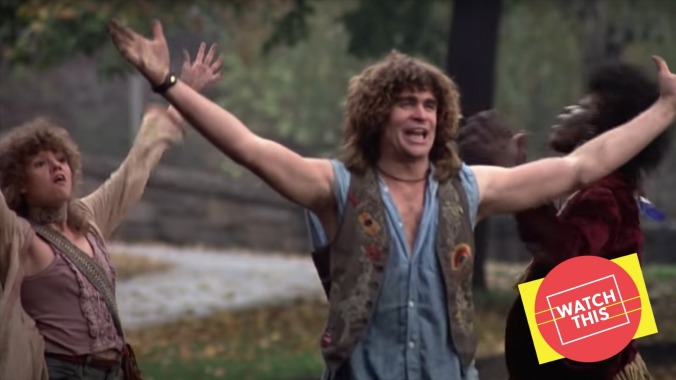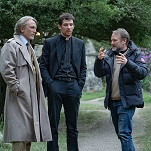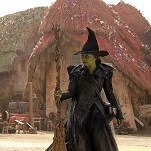A decade after the dream of the ’60s died, Hair joyously revived it

Watch This offers movie recommendations inspired by new releases, premieres, current events, or occasionally just our own inscrutable whims. This week: The recent release of Gloria Steinem biopic The Glorias and Aaron Sorkin’s The Trial Of The Chicago 7—along with the ongoing protests in the streets of American cities—has us thinking back on other movies about activism.
Hair (1979)
By the time Hair the movie finally came to theaters, it had been over a decade since the 1968 Broadway debut of the musical that brought the hippie counterculture to mainstream audiences. Woodstock footage was vintage, stemming from an age that seemed much further away—an innocent time now stained by the Manson murders and Watergate. Although he had no experience in musicals, director Miloš Forman chose Hair as the follow-up to his Oscar-winning One Flew Over The Cuckoo’s Nest. With the aid of choreographer Twyla Tharp and screenwriter Michael Weller, he reworked the plot of the entire story, so much so that original creators Gerome Ragni and James Rado maintained that the definitive screen version of Hair had yet to be filmed.
Forman et al., though, were able to accomplish the near-impossible: simultaneously bringing that counterculture back to life for the length of one joyous, energetic film, and preserving it for posterity forever afterward. Freed from the constraints of the stage, Forman used the bucolic but decidedly urban Central Park as his backdrop, Tharp’s jubilant yet pointed choreography (police horses mimic the hippies dancing mere minutes into the film) celebrating not just the youth movement but life itself. In contrast to the stage version, in which he was among the leaders of the hippie group, protagonist Claude (John Savage, who appeared in the similarly Vietnam-themed The Deer Hunter the year before) is now an innocent Okie who comes to New York to enter the Army after being drafted. There, he falls in with the hippie crowd, led by Treat Williams’ Berger, in an unforgettably charismatic performance.
Hair’s embrace of life transcends the anti-war movement, as Berger proclaims in his most triumphant performance, “I Got Life,” explaining to a posh group of swells what he gets out of his unconventional lifestyle. Even the title song—which Forman places in a jail, highlighting the film’s theme of freedom—makes a case for hair as rebellion, an easy flag to indicate defiance of the establishment and the embrace of the moment. In Savage’s number “Where Do I Go?”, a band of commuters follow each other robotically and fruitlessly, seeming much more lost than the effervescent Central Park crowds of drug-takers and music-lovers.







































